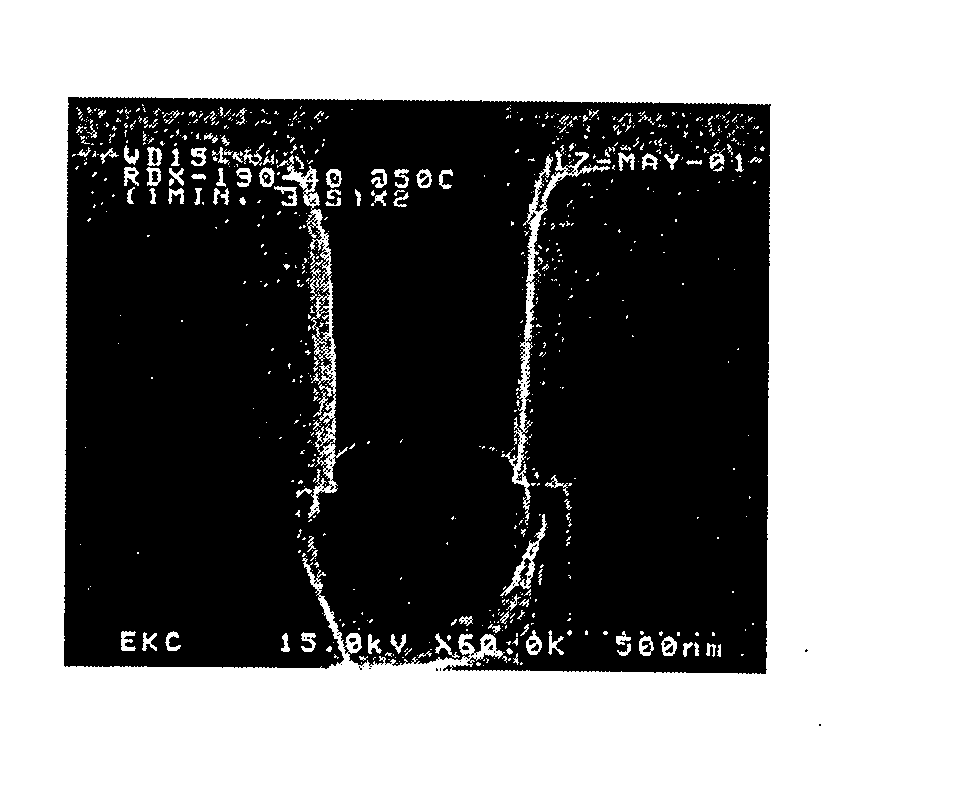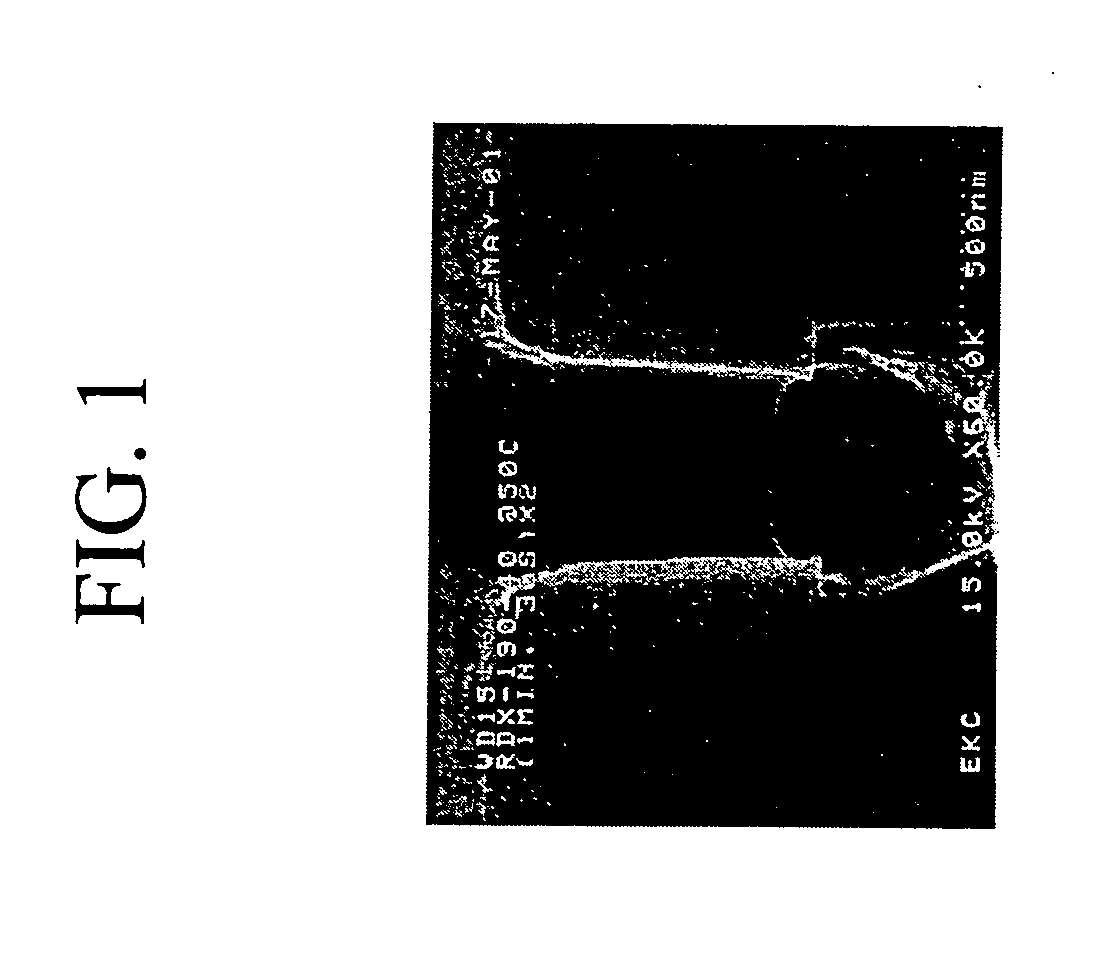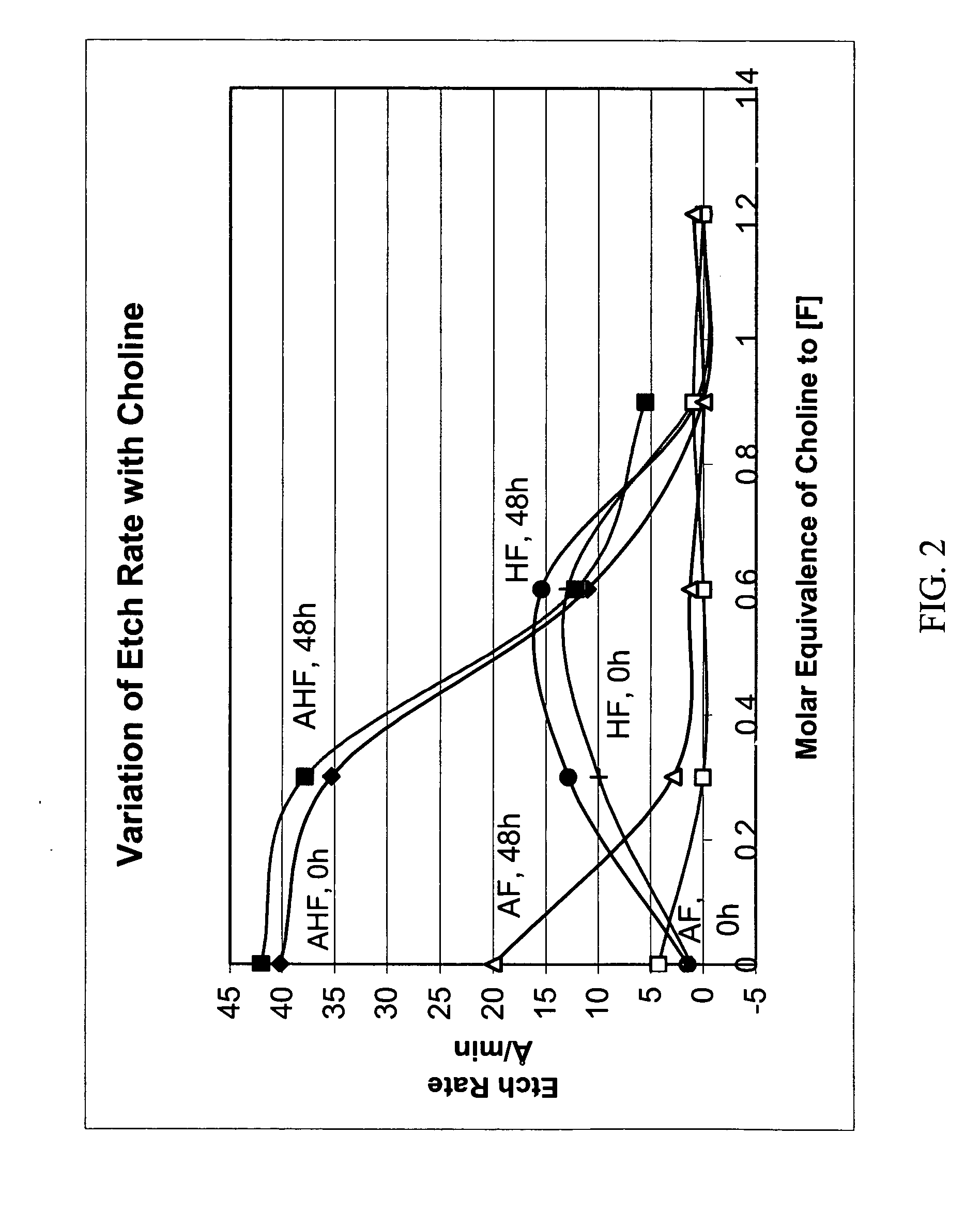Compositions for cleaning organic and plasma etched residues for semiconductor devices
a technology of organic and plasma etching residues, applied in the field of compositions for cleaning, can solve the problems of etching process producing undesirable by-products, contaminated substrates, and ineffective cleaning, and achieves the effects of reducing the number of etchings
- Summary
- Abstract
- Description
- Claims
- Application Information
AI Technical Summary
Benefits of technology
Problems solved by technology
Method used
Image
Examples
example 1
[0079] A group of cleaning chemistries containing the ingredients of ammonium fluoride, water, and a sulfoxide or sulfone solvent were tested with metal wafers which have stacks of TiN / AlCu / TiN / Ti / Oxide etched with a chlorinated plasma in a commercially available etcher. The resulting metal wafers with residues were cut into small sample pieces, and then the sample pieces were immersed into the chemistry solutions in Table 1 for cleaning for 5 minutes at room temperature. The sample pieces were taken out, rinsed with deionized water and dried with the flow of N2. SEM was performed with a Hitachi 4500 FE-SEM for evaluating cleaning and corrosion effects. Residue removal and corrosion effects on metal stack were assessed by visual comparisons and were all ranked on a scale of 1 to 10. The formulations in table 1 are shown in weight percent.
TABLE 1For-40%DITimeResultsmulaNH4FwaterDMSOACNHDA(Min.)CleanCorrosionA*0.7520750051010B13506405108C13500645810
*Formula A also contained 4.25% DM...
example 2
[0081] A blend of 42.6 percent by weight ethyl lactate, 28.4 percent by weight DMSO, 28.4 percent by weight water and 0.4 percent by weight ammonium hydrogen fluoride was prepared to clean etch residue from a substrate. FIG. 1 shows the effective removal of the etch residue.
example 3
[0082] Ammonium hydrogen fluoride (ammonium bifluoride) was substituted in place of ammonium fluoride and hydrofluoric acid. As can be seen in FIGS. 4A-4C, the best results were using ammonium hydrogen fluoride which effectively removed etch residue without over etching the via being cleaned.
PUM
| Property | Measurement | Unit |
|---|---|---|
| temperatures | aaaaa | aaaaa |
| dielectric constant | aaaaa | aaaaa |
| pH | aaaaa | aaaaa |
Abstract
Description
Claims
Application Information
 Login to View More
Login to View More - R&D
- Intellectual Property
- Life Sciences
- Materials
- Tech Scout
- Unparalleled Data Quality
- Higher Quality Content
- 60% Fewer Hallucinations
Browse by: Latest US Patents, China's latest patents, Technical Efficacy Thesaurus, Application Domain, Technology Topic, Popular Technical Reports.
© 2025 PatSnap. All rights reserved.Legal|Privacy policy|Modern Slavery Act Transparency Statement|Sitemap|About US| Contact US: help@patsnap.com



